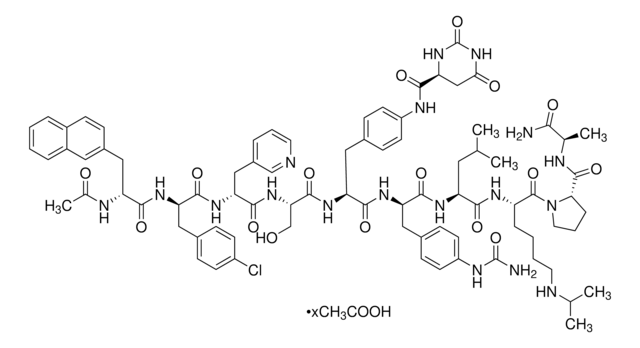Kluczowe dokumenty
SML0146
ZL006
≥98% (HPLC)
Synonim(y):
4-((3,5-Dichloro-2-hydroxybenzyl)amino)-2-hydroxybenzoic acid
About This Item
Polecane produkty
Poziom jakości
Próba
≥98% (HPLC)
Postać
powder
kolor
white to tan
rozpuszczalność
DMSO: ≥5 mg/mL (warmed to 60° C)
temp. przechowywania
2-8°C
ciąg SMILES
OC1=C(Cl)C=C(Cl)C=C1CNC(C=C2)=CC(O)=C2C(O)=O
InChI
1S/C14H11Cl2NO4/c15-8-3-7(13(19)11(16)4-8)6-17-9-1-2-10(14(20)21)12(18)5-9/h1-5,17-19H,6H2,(H,20,21)
Klucz InChI
RTEYSQSXRFVKTJ-UHFFFAOYSA-N
Działania biochem./fizjol.
Kod klasy składowania
11 - Combustible Solids
Klasa zagrożenia wodnego (WGK)
WGK 3
Certyfikaty analizy (CoA)
Poszukaj Certyfikaty analizy (CoA), wpisując numer partii/serii produktów. Numery serii i partii można znaleźć na etykiecie produktu po słowach „seria” lub „partia”.
Masz już ten produkt?
Dokumenty związane z niedawno zakupionymi produktami zostały zamieszczone w Bibliotece dokumentów.
Nasz zespół naukowców ma doświadczenie we wszystkich obszarach badań, w tym w naukach przyrodniczych, materiałoznawstwie, syntezie chemicznej, chromatografii, analityce i wielu innych dziedzinach.
Skontaktuj się z zespołem ds. pomocy technicznej